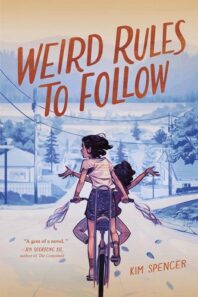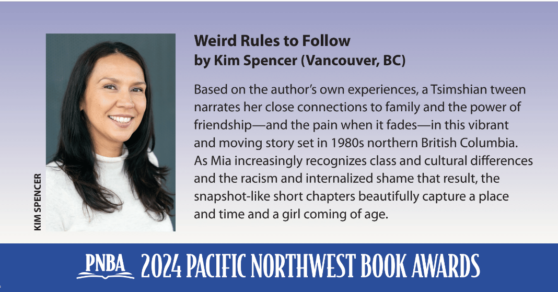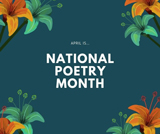I grew up reading Judy Blume and the Sweet Valley High series. Book after book, I never saw anyone on the page who resembled me or had similar family experiences. What’s worse—I didn’t notice. Then, in my early twenties, I attended a Native College where I was assigned to read novels by Indigenous authors. Wow, those books had an impact!
Yet it wasn’t until 2015 that I started more intentionally reading IBPOC books and understood how necessary representation in literature is—especially in children’s books.
 Weird Rules to Follow is a historical fiction novel set in the ’80s. The semi-autobiographical stories contrast an Indigenous girl’s life against her non-Indigenous best friend’s. Through that friendship, the protagonist, Mia, becomes aware of disparity, classism and the unspoken rules that shape her world.
Weird Rules to Follow is a historical fiction novel set in the ’80s. The semi-autobiographical stories contrast an Indigenous girl’s life against her non-Indigenous best friend’s. Through that friendship, the protagonist, Mia, becomes aware of disparity, classism and the unspoken rules that shape her world.
Short vignettes go from nostalgic childhood stories to weightier social issues. Those quick shifts are intentional. They are meant to convey just how confusing it would have been for a child to experience.
Through the lens of a racialized girl, we read firsthand accounts of oppression, prejudice and the ensuing shame. Stories that show—kids miss nothing. Not even underhanded, off-the-cuff remarks. Some stories are left sitting on the page. Readers may feel unsettled—again, this is intentional. Many of the wrongs written about weren’t openly acknowledged back then. There wasn’t a language or recourse for microaggression.
In the ’80s, Native Indians were expected to know their place. Yet Weird Rules to Follow shares nuanced stories of an Indigenous community rich in love for family, culture and adventure. The commercial fishing industry in Prince Rupert was booming—there was big money to be made. That thriving industry made for a proud, self-reliant community. It was a unique time in British Columbia’s history.
The book also highlights ways we were different. How we grieved differently: “Native girls don’t cry like the white girls do.” And, “White tears get a lot of sympathy and attention. They are like show-and-tell tears. Our tears, the few that are shed, seem to make people uncomfortable.” An outward expression of emotion requires vulnerability and safety. It was a luxury we weren’t afforded back then.
Mia also reveals how her sense of self is different. The complicated view of her Indigeneity resulted from the social conditioning around her. We see this in the story “Raise Your Hand if You’re Native Indian.” Mia couldn’t bring herself to publicly identify as Native Indian in front of her classmates. “I’m too embarrassed to raise my hand. But I feel equally ashamed for not raising it.” This is a learned shame. A societal dilemma that left her needing Pepto-Bismol in order to self-soothe.
A story titled “Don’t Marry an Indian” once again leaves young Mia feeling perplexed about her Indigenous heritage. The story doesn’t explain that the aunt who made the comment was an oppressed Indigenous woman. Who, because of gender discrimination, lost her government-issued Indian Status Card because she married a white man. And because of racist ideologies, it was internalized shame that caused the aunt to believe that—to free oneself from that discriminatory world, you had to reject yourself. Don’t marry an Indian.
A few stories touch on the traumatic legacy of Indian Residential Schools/Boarding Schools and the effects of intergenerational trauma. Those atrocities weren’t openly or widely discussed back then. They were only referred to as those schools in hushed tones.
The title of Weird Rules to Follow came from a story about Bologna Sandwiches. Mia’s mother wouldn’t let her take thick fried bologna to school because “Only Indians and poor people eat…” Once the title was decided upon, the overarching theme of the unwritten rules Mia had to follow became evident—
it wasn’t just one weird rule. I shared the title with a first-generation Korean friend and explained its meaning. She agreed and said she had to follow those same rules at home and school.
Although an Indigenous story, Weird Rules to Follow is a coming-of-age novel with a universal appeal. It covers everything from ’80s music references to adolescent angst and a young person’s deep desire to fit in. Add to that complex family dynamics and the loss of childhood friendship. While weightier topics are discussed, the overall storyline is full of heart and humour.
For a debut Indigenous author, I’m truly grateful for the incredible reception my book has received and hope it will continue to be read.
Celebrate Kim Spencer and the other winners of 2024 Pacific Northwest Book Awards with the virtual event on Zoom Feb 8, 2024 at 6:00 PM Pacific Time. REGISTER NOW.
You can also meet Kim Spencer and learn more about her book, Weird Rules to Follow, on February 22nd at an in-person celebration for her at 6pm at Village Books and Paper Dreams 1200 11th Street, Bellingham, WA.
NWbooklovers posts original essays from this year’s award winners as featured posts in January and February. You can enjoy essays from past winners of the PNBA Book Award in our archive.




